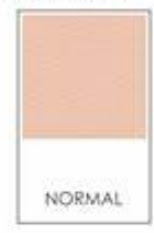building a skincare routine for combination skin types | skincare 101
With so many different skincare products out there, it can be hard to figure out exactly which of those your skin needs. For combination skin types, we'll use the outline below to create a skincare routine tailored to combination skin type needs!
You should already know what to look for in a cleanser from this post. Now, all you need to figure out is when and how to use your cleanser!
- Always read the instructions on your product; many people ignore these steps and simply apply the product, but it's better for your skin to read and figure out exactly how much to use and how long to massage onto your face
- If you have excess oil and sweat on your t-zone area, try dabbing gently with a towel first to make sure your skin is dry before you apply cleanser; this will make the cleanser more effective overall for your skin
- Use your cleanser first thing in your morning and evening routine
- Cleansing first before exfoliating 'prepares' your skin for exfoliating and makes your exfoliator more effective in removing impurities and clearing out your pores
Exfoliators are products that help remove dead skin cells from your face to create even tone and to allow new healthy skin cells to shine through. How should you use exfoliators on combination skin? Let's dive in.
Combination skin types still need exfoliating as the oily parts of your face, namely the t-zone, can easily get clogged pores from excess oil. When exfoliating combination skin, it's important to focus especially on the t-zone, where your pores are typically larger and need more attention. There are also specific exfoliators you should look for that also moisturize, so you can keep your combination skin balanced.
Here's a list of the best combination exfoliators to help you get started!
WHAT TO LOOK FOR + AVOID:
- Look for mild chemical exfoliators that target oiliness and won't be too harsh on the drier parts of your skin
- Another option are mechanical based exfoliators; mechanical cleanses skin more thoroughly but may irritate your skin as well depending on sensitivity
- If you're looking for chemical exfoliators, look for AHAs (alpha hydroxy acids) and BHAs (beta hydroxy acids). AHAs cleanse at the surface level while BHAs go deeper into your pores. Some great hydroxy acids in exfoliators are glycolic, lactic, and salicylic acid
- If you're looking for mechanical exfoliators, check in with your skin sensitivity and opt for gentler scrubbing beads. Especially with darker skin, it's important to use gentle exfoliators if you want to use mechanical-based products over chemical based
- Avoid products with alcohol and oil
- Exfoliate after your cleanser because your skin will be more prepped for exfoliating once it has been properly cleansed first
- Exfoliate in the morning; this is because you want to get rid of any skin impurities and oils that your skin produces over night
- Exfoliate one to three times a week, depending on how dry your skin is,
3. TONER
Toner is a water-based tonic that packs in tons of ingredients to brighten, even, moisturize, and more for your skin. Many people use toner to remove makeup ask well. For combination skin, toner is great for continuing the exfoliation process on your skin while gently hydrating at the same time. Here's a list of toners that are well-suited for combination skin!
WHAT TO LOOK FOR + AVOID
- As always, avoid fragrances, alcohols, and dyes so you won't irritate your skin
- Look for AHAs and BHAs like glycolic acid and salicylic acid to thoroughly cleanse out pores
- Similar to oily skin type toners, look for hydrating ingredients that will control your skin's moisture levels and prevent over production of your skin's facial oil glands, such as AHAs and BHAs
- Use your toner twice a day after exfoliating and before moisturizing
- Swipe on your toner using a cotton pad or your fingers; make sure the toner is completely absorbed into your skin and wipe off to carry out the exfoliation your toner provides
4. MOISTURIZER
You should already know what to look for in a moisturizer from this post. Now, all you need to figure out is when and how to use your moisturizer!
- Start with a very small pump (dot-sized amount) and use a circular motion to gently rub in your moisturizer; if desired, repeat this process
- For combination skin, target your cheeks and any other dry-prone areas; depending on your skin, you may choose not to moisturize the oiler parts of your skin as much
- Moisturizer serves as a protective barrier during the day and helps revitalize your skin during the night, so it's important to moisturize twice a day as the last part of your skincare routine
- Remember it's important for oily skin types to moisturize consistently so that your facial oil glands won't produce excess oil
This is the complete guide to your skincare routine for combination skin! In the upcoming posts, you'll learn how to add onto this combination type-focused skin care routine to fully customize it to your skin needs! Stay tuned for more tips and tricks that'll help you get your dream skin!

.jpg)
.jpg)
.jpg)
.jpg)



Comments
Post a Comment